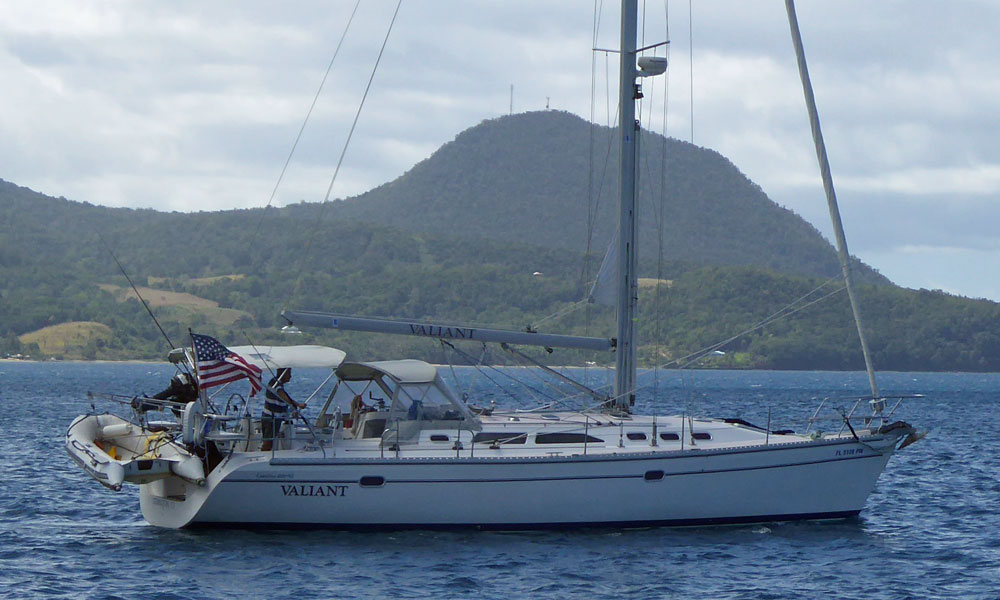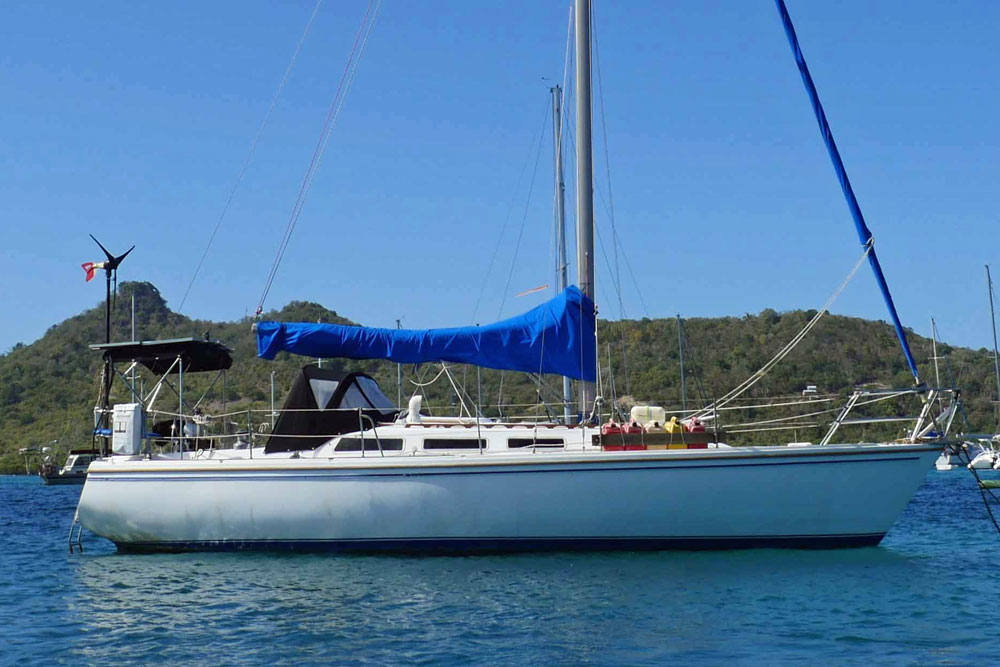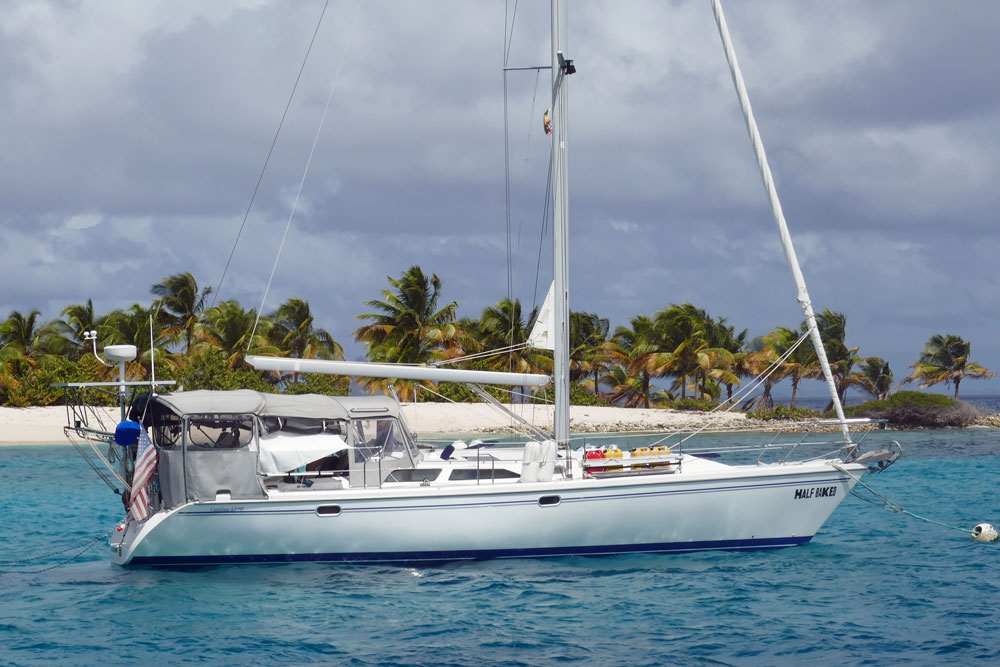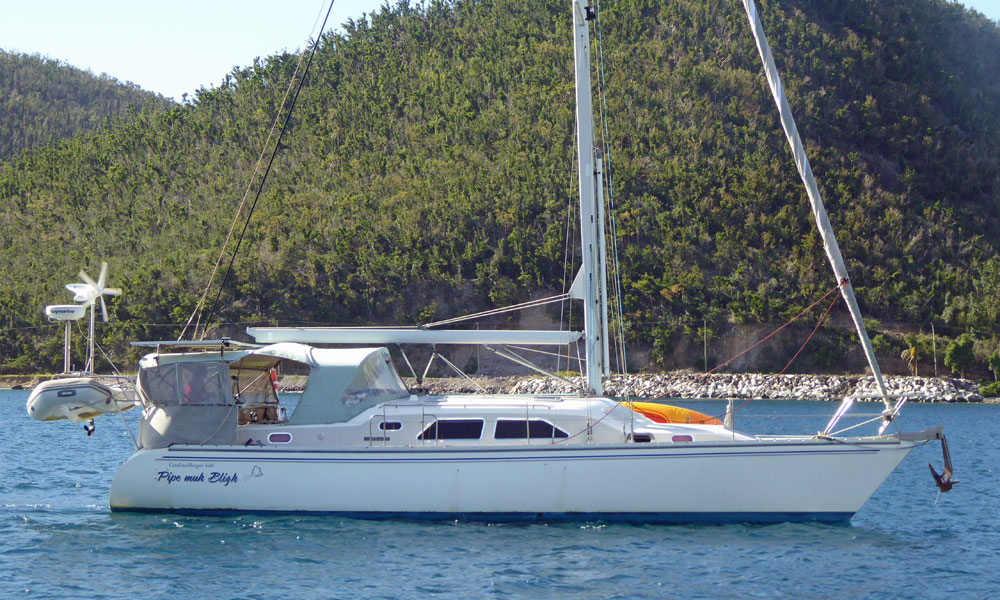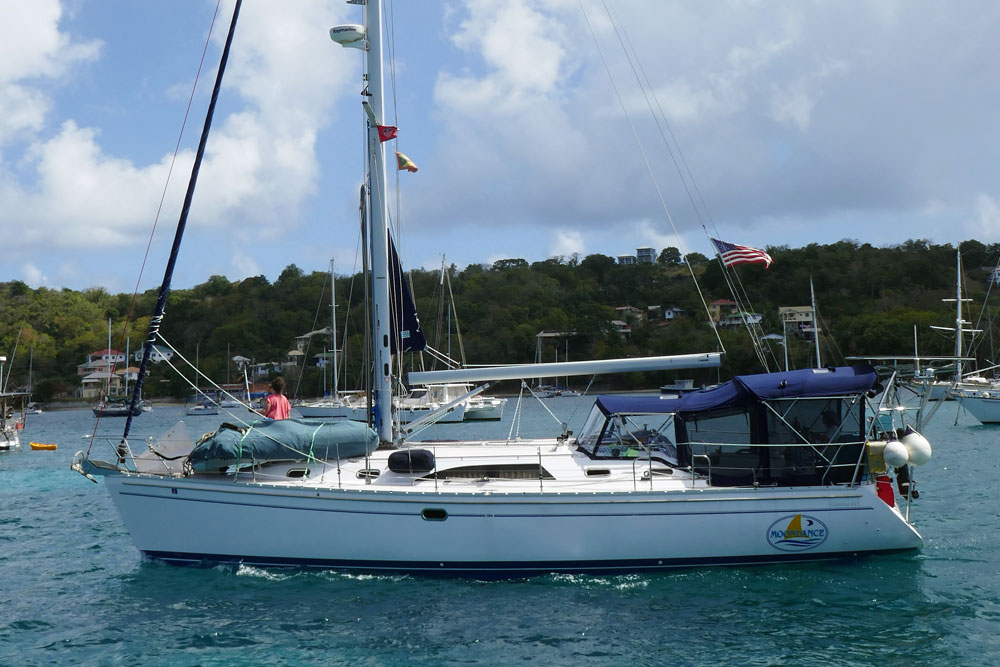- Home
- Cruising Yachts 40' to 45'
- Catalina 400
The Catalina 400 Sailboat
Specs & Key Performance Indicators
The Catalina 400, an aft-cockpit masthead sloop, was designed by Frank Douglas & Gerry Douglas and built in the USA by Catalina Yachts.
Published Specification for the Catalina 400 MkII
Underwater Profile: Fin keel with spade rudder
Hull Material: GRP (Fiberglass)
Length Overall: 40'6" (12.3m)
Waterline Length: 36'6" (11.1m)
Beam: 13'6" (4.1m)
Draft: 6'11" (2.1m)
Rig Type: Masthead sloop
Displacement: 31,966lb (14,500kg)
Designer: Frank Douglas & Gerry Douglas
Builder: Catalina Yachts (USA)
Year First Built: 2000
Owners Association: Catalina Owners
Published Design Ratios for the Catalina 400 MkII
1. Sail Area/Displacement Ratio: 17.8
2. Ballast/Displacement Ratio: 36.6
3. Displacement/Length Ratio: 181
4. Comfort Ratio: 25.2
5. Capsize Screening Formula: 2.0
The Catalina 400: A Few FAQs...
Based on the published Design Ratios for the Catalina 400, how would you expect the boat to perform under sail?
Based on the published Design Ratios for the Catalina 400, how would you expect the boat to perform under sail?
The Catalina 400 has a Sail Area/Displacement Ratio of 17.8, which indicates reasonably good performance and the ability to approach its maximum hull speed in the right conditions.
The boat also has a Ballast/Displacement Ratio of 36.6, which means it is moderately stiff and powerful.
The Displacement/Length Ratio of 181 suggests that the boat is light for its length and has less resistance to motion.
The Comfort Ratio of 25.2 implies that the boat is suitable for coastal or offshore cruising, but not for extreme conditions.
Is the Catalina 400 still in production and, if not, when did production end and how many of these sailboats were built?
Is the Catalina 400 still in production and, if not, when did production end and how many of these sailboats were built?
The Catalina 400 is no longer in production. The last year of production was 2009, according to the Catalina Yachts website. The exact number of boats built is not known, but some sources estimate that around 500 Catalina 400s were made.
What, if any, alternative versions of the Catalina 400 were built and what are the differences between them?
What, if any, alternative versions of the Catalina 400 were built and what are the differences between them?
The main alternative version of the Catalina 400 is the MkII model, which was introduced in 2000. The MkII has a redesigned deck, cockpit, rig, and interior layout. Some of the changes include a larger cockpit with twin wheels, a walk-through transom with a swim platform, a taller mast with swept-back spreaders, a larger galley with more storage, and a more open salon with an L-shaped settee. There are also different keel options for the Catalina 400, such as a fin keel or a wing keel with different drafts.
How many people can sleep on board a Catalina 400?
How many people can sleep on board a Catalina 400?
The Catalina 400 can sleep up to seven people on board. The boat has two private cabins, one forward and one aft, each with a double berth and an ensuite head. The salon also has two settees that can be converted into single berths, and a dinette that can be lowered to form another double berth.
How did the sailing press review the Catalina 400?
How did the sailing press review the Catalina 400?
The sailing press generally gave positive reviews to the Catalina 400, praising its spaciousness, comfort, quality, and performance.
For example, Sailing Magazine called it "a roomy cruiser that sails well" and "a good value for the money".
Sail Magazine described it as "a big-volume cruiser with lots of amenities" and "a capable performer under sail".
Cruising World said it was "a comfortable cruiser with surprising speed" and "a well-built boat with lots of clever features".
What is the history of the builders of the Catalina 400 and is the company still in business?
What is the history of the builders of the Catalina 400 and is the company still in business?
The builders of the Catalina 400 are Catalina Yachts, a company founded by Frank Butler in 1969 in California. The company started with a 22-foot trailerable sailboat and grew to become one of the largest sailboat manufacturers in the world, producing over 60,000 boats in various models and sizes. The company is still in business and is currently led by Frank Butler's son-in-law, Sharon Day. The company is known for its customer service, dealer network, and owner associations.
What keel options, if any, are available for the Catalina 400?
What keel options, if any, are available for the Catalina 400?
The Catalina 400 has two keel options: a wing keel or a fin keel. The wing keel is the standard option and has a shorter draft of 5.5 feet (1.68 meters). The wing keel has two horizontal extensions at the bottom that increase the surface area and the righting moment of the keel. The fin keel is an optional option and has a deeper draft of 7 feet (2.13 meters). The fin keel has a narrower profile and less wetted surface area than the wing keel. The wing keel is more suitable for shallow water sailing and offers more stability at low speeds. The fin keel is more suitable for deep water sailing and offers more performance at high speeds.
What is the average cost of a secondhand Catalina 400?
What is the average cost of a secondhand Catalina 400?
The average cost of a secondhand Catalina 400 depends on many factors, such as the year, condition, equipment, location, and market demand of the boat. According to some online listings, the price range of a used Catalina 400 can vary from around $80,000 to $180,000 USD.
How does the Catalina 400 compare to other similar sailboats in its class?
How does the Catalina 400 compare to other similar sailboats in its class?
The Catalina 400 is comparable to other similar sailboats in its class, such as the Beneteau Oceanis 40, the Hunter 410, or the Jeanneau Sun Odyssey 40. These boats are all around 40 feet long and designed for cruising. They have similar features, such as spacious interiors, comfortable cockpits, and easy handling. They also have similar performance characteristics, such as moderate speed, stability, and manoeuvrability. However, they also have some differences, such as different hull shapes, rig configurations, keel designs, interior layouts, and equipment options. The choice of which boat is better depends on personal preference and sailing needs.
The above answers were drafted by sailboat-cruising.com using GPT-4 (OpenAI’s large-scale language-generation model) as a research assistant to develop source material; to the best of our knowledge, we believe them to be accurate.
Other sailboats in the Catalina range include:
Recent Articles
-
Small Boat Radar Systems: Your Questions Answered
Apr 13, 25 06:40 AM
Whatever your question about small boat radar systems, you're very likely to find the answers here... -
How a Marine EPIRB Can Get You into Trouble, As Well As Out Of It
Apr 12, 25 05:51 PM
Activating a marine EPIRB or a Personal Locator Beacon (PLB) when you're not in distress can get you in big trouble with the Coastguard, as this cautionary tale relates. -
What is an EPIRB?
Apr 12, 25 05:43 PM
Got any EPIRB-related questions? You're almost certain to find the answers here...
